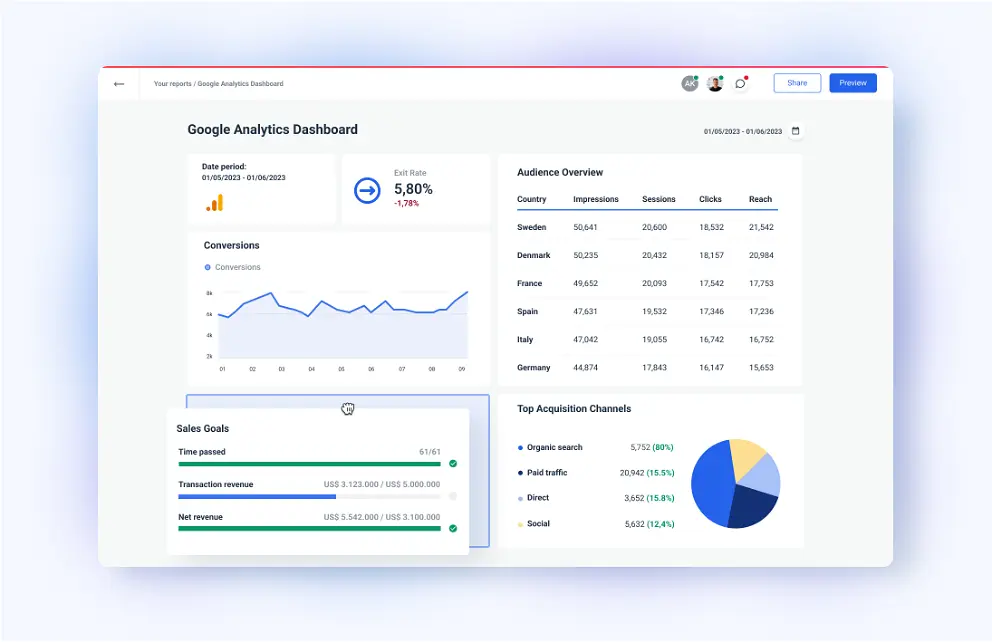Outdated Design and Functionality
Signs Your Website Needs a Redesign
In today’s digital landscape, a website serves as a crucial touchpoint for businesses to connect with their target audience. However, as technology evolves and user expectations shift, it becomes imperative to evaluate whether your website requires a redesign. Here are some telltale signs that indicate the need for a website overhaul:
Outdated Design:
A website’s design should reflect the current aesthetic trends and user preferences. If your website features outdated graphics, cluttered layouts, or a lack of mobile responsiveness, it may be time for a refresh. A modern design will enhance the user experience, making it easier for visitors to navigate and engage with your content.
Limited Functionality:
As technology advances, so do the expectations of website users. If your website lacks essential features such as e-commerce functionality, social media integration, or search engine optimization (SEO), it may be falling behind the competition. A redesign can incorporate these features, improving the overall functionality and user experience.
Slow Loading Times:
Website speed is a critical factor in user engagement. If your website takes too long to load, visitors are likely to abandon it. A redesign can optimize your website’s code, images, and other elements to improve loading times and enhance the user experience.
Inconsistent Branding:
Your website should be an extension of your brand identity. If your website’s design and content do not align with your brand’s messaging and values, it can create confusion and damage your brand reputation. A redesign can ensure that your website reflects your brand’s personality and strengthens your brand identity.
Lack of Accessibility:
Accessibility is essential for ensuring that your website is accessible to all users, including those with disabilities. If your website does not meet accessibility standards, it may be excluding a significant portion of your potential audience. A redesign can incorporate accessibility features such as screen readers, closed captions, and alternative text to make your website inclusive.
Low Conversion Rates:
If your website is not generating the desired results, such as leads or sales, it may be time for a redesign. A well-designed website should guide users through a clear conversion funnel, making it easy for them to take the desired actions. A redesign can optimize your website’s layout, content, and call-to-actions to improve conversion rates.
By addressing these signs, you can ensure that your website remains relevant, engaging, and effective in meeting your business objectives. A well-designed website will not only enhance the user experience but also contribute to your brand’s success and growth.
Poor User Experience and Navigation
Signs Your Website Needs a Redesign: Poor User Experience and Navigation
A website’s user experience (UX) and navigation play a crucial role in determining its success. When these elements fall short, it can lead to a frustrating and ineffective online presence. Here are some telltale signs that your website is in dire need of a redesign:
Inconsistent or Confusing Navigation:
If users struggle to find the information they seek or navigate through your website seamlessly, it’s a clear indication of poor navigation. Inconsistent menu structures, broken links, and hidden content can all contribute to a negative UX.
Slow Loading Times:
In today’s fast-paced digital world, users expect websites to load quickly. If your website takes an eternity to load, it will likely drive visitors away before they even have a chance to explore its content.
Lack of Mobile Optimization:
With the majority of internet traffic now coming from mobile devices, it’s essential to ensure your website is mobile-friendly. If your website is not responsive or optimized for smaller screens, you’re missing out on a significant portion of your potential audience.
Outdated Design:
A website’s design should reflect the current trends and best practices. If your website looks outdated or uses outdated technology, it can give the impression that your business is behind the times.
Lack of Accessibility:
Accessibility is paramount for ensuring that all users, regardless of their abilities, can access and interact with your website. If your website is not accessible, you’re excluding a large segment of potential customers.
High Bounce Rates:
A high bounce rate indicates that users are leaving your website quickly after landing on it. This can be a sign of poor UX, confusing navigation, or irrelevant content.
Low Conversion Rates:
If your website is not converting visitors into customers or leads, it’s a clear indication that something is amiss. Poor UX and navigation can significantly impact conversion rates.
Negative User Feedback:
If you’re receiving negative feedback from users about your website’s UX or navigation, it’s time to take action. User feedback is invaluable in identifying areas for improvement.
Conclusion:
A website that suffers from poor UX and navigation can have a detrimental impact on your business. By addressing these issues through a redesign, you can enhance the user experience, improve navigation, and ultimately drive more traffic, conversions, and revenue.
Lack of Mobile Optimization
Signs Your Website Needs a Redesign: Lack of Mobile Optimization
In today’s digital landscape, a mobile-friendly website is no longer a luxury but a necessity. If your website fails to provide an optimal experience on smartphones and tablets, it’s time to consider a redesign. Here are some telltale signs that your website is in dire need of mobile optimization:
Slow Loading Times: Mobile users are notoriously impatient. If your website takes more than a few seconds to load, they’re likely to abandon it. Optimize your images, reduce unnecessary code, and consider using a content delivery network (CDN) to improve loading speeds.
Difficult Navigation: Navigating your website on a mobile device should be effortless. Avoid complex menus, small fonts, and clickable elements that are too close together. Implement a responsive design that automatically adjusts to different screen sizes, ensuring a seamless user experience.
Lack of Responsive Design: A responsive design ensures that your website adapts to any device, regardless of its screen size or orientation. If your website doesn’t scale properly, it will appear distorted or unusable on mobile devices, driving away potential customers.
Unreadable Content: Mobile screens are smaller than desktop monitors, so it’s crucial to optimize your content for readability. Use larger fonts, break up text into smaller paragraphs, and avoid using excessive jargon or technical terms.
Lack of Mobile-Specific Features: Mobile users expect certain features that enhance their experience, such as click-to-call buttons, location-based services, and mobile payment options. If your website lacks these features, it’s falling behind the competition.
Low Conversion Rates: A poorly optimized mobile website can significantly impact your conversion rates. If users struggle to navigate or find the information they need, they’re less likely to make a purchase or take any desired action.
Negative User Feedback: If you’re receiving negative feedback from mobile users about your website’s performance, it’s a clear indication that a redesign is necessary. Listen to your users’ concerns and address them promptly to improve their experience.
By addressing these signs of mobile optimization deficiency, you can create a website that meets the needs of today’s mobile-first users. A well-designed mobile website will not only enhance user satisfaction but also boost your search engine rankings, increase conversions, and ultimately drive business success.
Low Conversion Rates and Engagement
Signs Your Website Needs a Redesign: Low Conversion Rates and Engagement
A website is a crucial touchpoint for businesses to connect with their target audience. However, if your website is not performing as expected, it may be time to consider a redesign. One of the most telling signs that your website needs a revamp is low conversion rates and engagement.
Conversion rates measure the percentage of visitors who take a desired action, such as making a purchase or signing up for a newsletter. If your conversion rates are consistently low, it suggests that your website is not effectively guiding users towards the desired outcome. This could be due to a lack of clear calls-to-action, confusing navigation, or an unappealing design.
Engagement metrics, such as time spent on site and bounce rates, also provide valuable insights into the effectiveness of your website. A high bounce rate indicates that visitors are leaving your website quickly, which could be a sign of poor content, slow loading times, or an unintuitive user interface. Similarly, if users are spending very little time on your website, it suggests that they are not finding the information or experience they are seeking.
In addition to low conversion rates and engagement, there are other factors that may indicate the need for a website redesign. These include:
- Outdated design: A website that looks outdated or uses outdated technology can give the impression that your business is not keeping up with the times.
- Lack of mobile optimization: With the majority of internet traffic now coming from mobile devices, it is essential to have a website that is optimized for mobile viewing.
- Poor content: Content that is poorly written, irrelevant, or outdated can negatively impact user experience and search engine rankings.
- Technical issues: Slow loading times, broken links, and other technical issues can frustrate users and damage your website’s credibility.
If you are experiencing any of these signs, it is time to consider a website redesign. A well-designed website can improve conversion rates, increase engagement, and enhance the overall user experience. By investing in a redesign, you can ensure that your website is a valuable asset for your business.
Security Vulnerabilities and Performance Issues
Signs Your Website Needs a Redesign: Security Vulnerabilities and Performance Issues
In today’s digital landscape, a website serves as a crucial touchpoint for businesses to connect with their target audience. However, as technology evolves, so too do the threats and challenges that websites face. If your website exhibits certain signs, it may be time to consider a redesign to address security vulnerabilities and performance issues.
Security Vulnerabilities
Outdated websites often lack the necessary security measures to protect against cyberattacks. Hackers may exploit these vulnerabilities to gain access to sensitive data, such as customer information or financial records. Signs of security vulnerabilities include:
- Outdated software: Websites built on outdated software platforms are more susceptible to security breaches.
- Lack of SSL encryption: SSL certificates encrypt data transmitted between the website and users, protecting it from eavesdropping.
- Weak passwords: Weak or easily guessable passwords can compromise website security.
- Unpatched vulnerabilities: Unpatched software vulnerabilities provide entry points for hackers.
Performance Issues
A slow or unresponsive website can frustrate users and negatively impact your business. Performance issues can stem from various factors, including:
- Outdated design: Websites designed with outdated technologies may not be optimized for modern browsers and devices.
- Excessive content: Websites with excessive images, videos, or scripts can slow down loading times.
- Poor coding: Inefficient coding practices can lead to performance bottlenecks.
- Inadequate hosting: Websites hosted on underpowered servers may struggle to handle traffic.
Consequences of Ignoring These Signs
Ignoring these signs can have severe consequences for your business:
- Security breaches: Compromised websites can lead to data loss, financial damage, and reputational harm.
- Lost revenue: Slow or unresponsive websites can drive away potential customers.
- Poor user experience: Frustrated users may abandon your website, damaging your brand image.
- Search engine penalties: Websites with security vulnerabilities or performance issues may be penalized by search engines, affecting their visibility.
Conclusion
If your website exhibits signs of security vulnerabilities or performance issues, it is imperative to consider a redesign. A well-designed website not only enhances user experience but also protects your business from cyber threats. By addressing these issues proactively, you can ensure that your website remains a secure and effective platform for your business.




